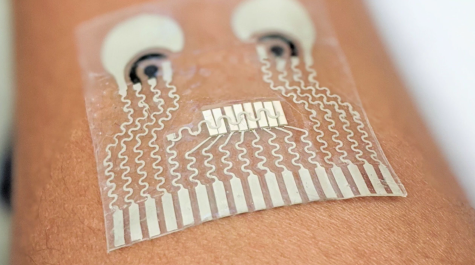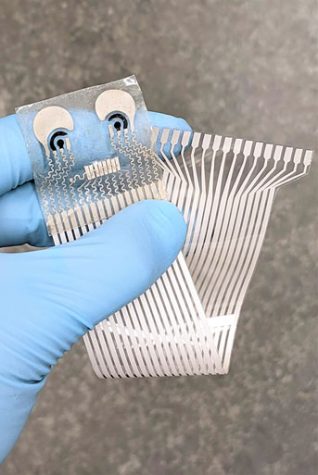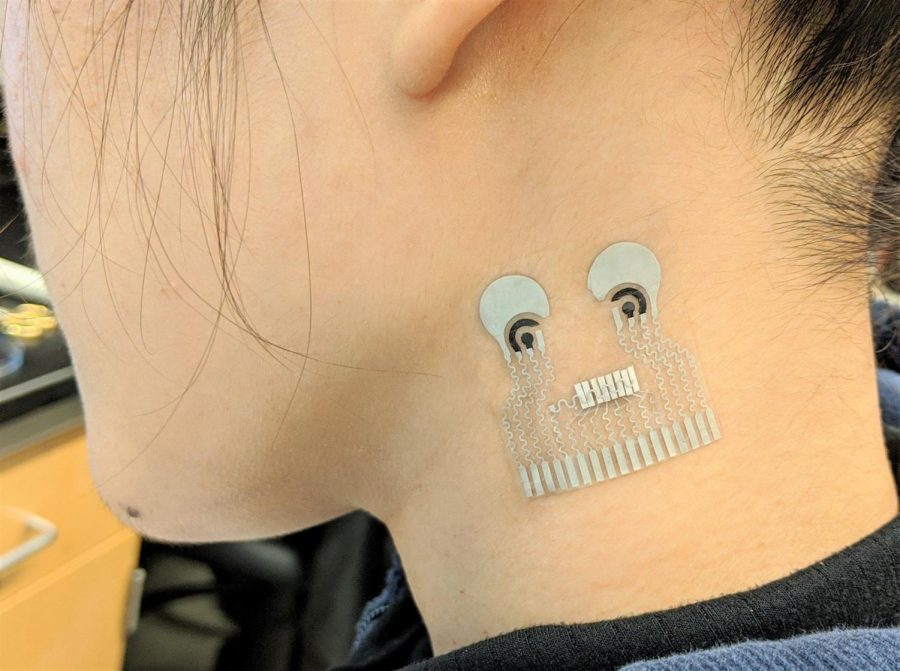New Skin Patch Monitors Multiple Aspects Of Your Health Simultaneously
Monitoring your health can be time-consuming and require lots of expensive equipment, but the engineers at the University of California, San Diego have created a soft and stretchy skin patch that monitors several aspects of your health all at once. It keeps track of your blood pressure, heart rate, glucose levels, lactate levels, alcohol levels, and caffeine levels. Lu Yin, a nanoengineering Ph.D. at UC San Diego and co-first author of the study in Nature Biomedical Engineering that was published on February 15th, 2021, says “This type of wearable would be very helpful for people with underlying medical conditions to monitor their own health on a regular basis. It would also serve as a great tool for remote patient monitoring, especially during the COVID-19 pandemic when people are minimizing in-person visits to the clinic.” This device could help people that need to manage their high blood pressure or diabetes and other people who are at high risk of catching the coronavirus. It can also help detect the start of sepsis, which clearly shows a sudden drop in blood pressure and a rapid rise in lactate levels to go along with it. “The novelty here is that we take completely different sensors and merge them together on a single small platform as small as a stamp. We can collect so much information with this one wearable and do so in a non-invasive way, without causing discomfort or interruptions to daily activity,” said Joseph Wang, professor of nanoengineering at UC San Diego and co-corresponding author of the study.

With Wang as their director, UC San Diego’s Center for Wearable Sensors combined two of their revolutionary efforts and created this visionary product. In Joseph Wang’s lab, they have been working on wearables that are capable of monitoring chemical, physical, and electrophysiological signals concurrently. Co-corresponding author of the study and UC San Diego nanoengineering professor Sheng Xu has been working with his colleagues in his lab on electronic skin patches that can monitor blood pressure deep inside the body. By working together, these researchers created the first flexible, stretchable, and wearable device that can simultaneously monitor blood pressure and chemical levels (glucose, caffeine, lactate, etc.). Xu says “Each sensor provides a separate picture of a physical or chemical change. Integrating them all in one wearable patch allows us to stitch those different pictures together to get a more comprehensive overview of what’s going on in our bodies.” The patch itself is a thin sheet of stretchy polymers that adheres to the skin. It’s outfitted with a blood pressure sensor and two chemical sensors. One of these chemical sensors measures lactate, caffeine, and alcohol in sweat, and the other measures glucose levels in interstitial fluid. The blood pressure sensor is comprised of a set of little ultrasound transducers that are welded to the patch by a conductive ink. Ultrasound waves that are sent into the body are caused by a voltage applied to the transducers. The sensor detects the echoes of the ultrasound waves when they hit an artery and translates the signals into a blood pressure reading. The two electrodes that make up the two chemical sensors are printed on the patch from conductive ink. The lactate, alcohol, and caffeine-sensing electrode is on the right side of the patch. It releases pilocarpine, which induces sweat, allowing the electrode to detect the chemical substances in the sweat. The glucose-sensing electrode is printed on the left side and works by sending a gentle electrical current through the skin to release interstitial fluid that the electrode measures the glucose in.

These particular biomarkers were chosen due to their impact on blood pressure. A nanoengineering Ph.D. student in Wang’s lab and co-first author named Juliane Sempionatto says “We chose parameters that would give us a more accurate, more reliable blood pressure measurement. Let’s say you are monitoring your blood pressure, and you see spikes during the day and think that something is wrong. But a biomarker reading could tell you if those spikes were due to an intake of alcohol or caffeine. This combination of sensors can give you that type of information” Subjects in the test wore the patch on their neck while completing assorted combinations of the following activities: eating a meal with lots of sugar; consuming caffeinated drinks; and exercising on a stationary bike. The measurements collected from the patch were very similar to those collected by specialized commercial monitoring devices like a glucometer, blood pressure cuff, breathalyzer, and blood lactate meter. These measurements were double-checked by measuring caffeine-spiked sweat samples. These brilliant researchers are already hard at work on a newer version of the patch that not only has more sensors but is also wireless. Currently, the sensor needs to be connected to a benchtop machine and a power source if they have any wish of accessing the readings. They also want to make the electronics for the blood pressure sensor even more compact to allow more space for the extra sensors they have planned. “There are opportunities to monitor other biomarkers associated with various diseases. We are looking to add more clinical value to this device,” Sempionatto said. According to Lin, “We want to make a complete system that is fully wearable.” In conclusion, this patch is proof of scientific advancement in the medical field and while it’s still in the process of being made, it nonetheless represents a huge milestone in easy healthcare for everyone.
RELATED STORIES:
https://techxplore.com/news/2021-02-skin-patch-closer-wearable-all-in-one.html















